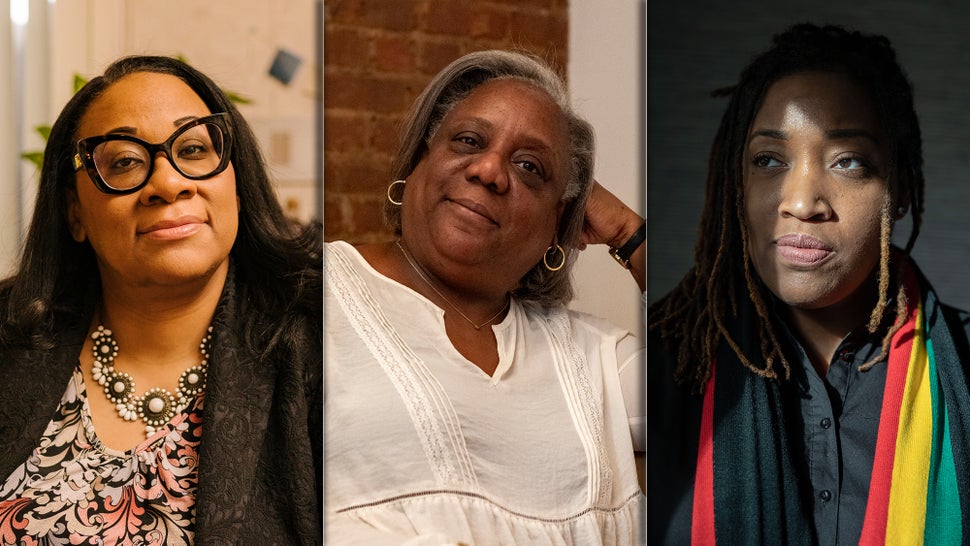
In 1930, there were about 5,000 midwives in Mississippi alone, many of them Black. These lay or “Granny” midwives learned their trade through apprenticeship and served as pillars of their communities — a history that went mostly undocumented. But in 1951, a Life magazine photo essay chronicling the work of midwife Maude Callen and “All My Babies,” a 1953 documentary training film funded by the Georgia Department of Public Health starring midwife Mary Coley, have preserved moving images of the way these midwives tirelessly cared for mothers and families living in abject poverty.
While they earned the respect of their communities and occasionally the public at large, midwives were simultaneously blamed for high infant and maternal mortality rates and tasked with reversing those trends.
Unlike in other parts of the world, lay midwives in the U.S. never gained the respect or support of the (white) medical establishment. The training of midwives eventually moved into nursing schools that excluded Black women, becoming an almost exclusively white profession. Then births moved into hospitals and became almost exclusively the realm of white medical doctors.
In its 2020 demographic report, the American Midwifery Certification reported 12,990 midwives in the country. Of these, only 890 were Black. (Note: These numbers account for registered certified nurse midwives (CNMs) and certified midwives (CMs) but do not include certified professional midwives (CPMs) or lay midwives. Here is an explanation of the differences.)
While medical advances, including ways to treat infection and hemorrhage, did bring down maternal and infant mortality rates from their high early 20th-century numbers, this trend has begun to reverse — and racial disparities in these numbers endure.
The U.S. has the distinction of being the only developed country with a rising maternal mortality rate. We report double maternal deaths as other high-income countries, and the CDC has found that almost two-thirds of these deaths are preventable. In addition, Black mothers are three to four times more likely to die than white ones.
Black babies also fare much worse. Recent data from California show grimly tiered levels of risk by race and income. The babies of the lowest-income Black families were almost four times as likely to die as those from the wealthiest white families. Wealth alone did not negate the impact of race, with the babies of the lowest-income white families more likely to survive than those of the richest Black families.
The causes of these rates and disparities are difficult to untangle. Still, we know that countries with lower C-section rates and higher numbers of midwives have much lower maternal and infant mortality rates.
Black women, including tennis champion Serena Williams, report that doctors dismiss their medical concerns during and after childbirth. The families of women who died following childbirth profiled in the film “Aftershock” similarly tell stories of doctors brushing off their pain and other symptoms in the days and hours preceding their deaths.
Black midwives are uniquely situated to see both the scope of this problem and some ways we might begin to solve it. HuffPost talked to six Black midwives to gather some of their insight.
Responses have been lightly edited for clarity and length.
Martine Jean-Baptiste, New York City, New York
“Prior to becoming a midwife, I worked as a nurse. First, I worked in medical-surgical nursing. I stayed there for three years. I knew in my heart that’s not what I wanted to do. I then moved on and worked at another hospital as a labor and delivery nurse, and I became a certified childbirth educator. I used to call myself a professional labor support person — the word doula is newer. Seeing what was happening in all the hospitals and other places I saw doing this labor support, I realized, I think I could make a better difference if I actually was the midwife. I could call the shots and protect people’s space. That’s when I decided to go back to school to become a midwife. I graduated, and I worked in an inner-city hospital, I worked at the freestanding birth center, and then I started my home birth practice and did that for 17 years.
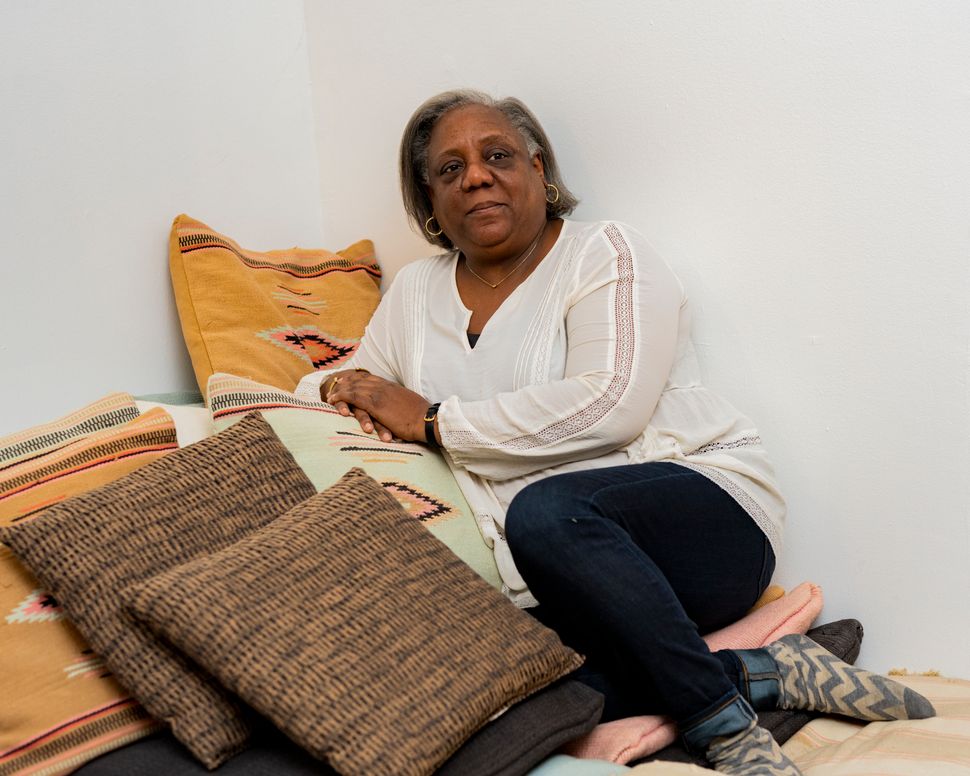
The first birth I attended as a home birth midwife was in Brooklyn. It was a religious Jewish family. My business partner Karen was the primary midwife for that first birth. It was just the woman and her husband in this little apartment. He was praying in one room, she was doing her thing in the other room. He was explaining all things Jewish religion to me. It was just wonderful — that feeling of there’s something really special, magical, knowing that you’re a participant in something so important. The world is going on about you, you hear the sounds in the street, everything going on like it’s a normal day when it’s like, ‘There’s a baby being born!’ Then the peaceful quietness when you finish, and you leave their home, and mom and baby are doing great, you know, everyone’s happy and tired, and you leave the home to get into your car. That feeling, I can’t even describe it.
It’s a lot of work — a lot of responsibility. You really have to build rapport with people and know how to reach out. Then they have that safety, and it’s just a real sacred space.
I said to my clients, ‘I’m your midwife for life,’ and they really take that literally. People still call me with different things.”
Alexis Dunn Amore, Memphis, Tennessee
“Even as a little girl, I knew I wanted to be in birth work. I was in Memphis when I became a nurse, and then I started doing some traveling nursing because I wanted to see what birth is like all over the country. That landed me in Atlanta, and that’s when I worked with my first midwife. It was the first time I had come in contact with modern-day nurse midwives. And I was like, ‘Oh, my goodness, I need I need to go back and do the midwife route. This is what I really want to do.’ I went to Emory to do the midwifery program, then worked as a midwife in Atlanta. I went back and got my Ph.D. because I wanted to be able to take care of more than one woman at a time. There’s so many layers of access to care and health disparities. And I wanted to be able to have a larger voice in that conversation.
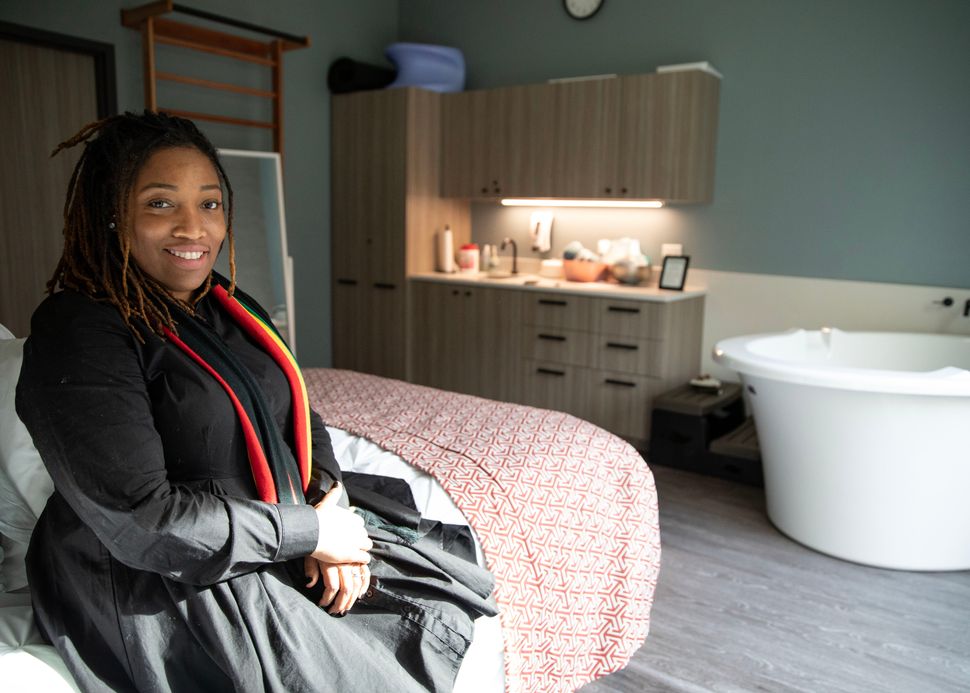
Every birth is special. I haven’t had a birth yet where I don’t get chills. But there’s certain births that stand out. One of them is with a patient named Erin. She had a high-risk complication called an amniotic fluid embolism. It’s a really rare complication that is often fatal. Our bond during her labor experience was so special because it was her second baby, I was pregnant with my second, and the nurse was pregnant with her second. We were calling ourselves the ‘Three Amigos’ — not knowing that potential tragedy was gonna strike. We had to move really fast. I remember running down the hallway, pregnant, and watching as they rolled her in. She had her C-section, and we didn’t know if she was gonna survive. I remember having a conversation with her husband and her family — the baby was in the ICU — just praying with them. I went back to the hospital a few days after that. I locked eyes with Erin, and we just held each other and cried. A year later, they invited me to come to their daughter’s first birthday. Every year they send me a picture of her as she grows.
Another mom, Vernette, she was actually a colleague who worked in the birth center. She wanted me and other Black midwives to be with her at her birth. She wanted that kind of cultural space. She’d lost her mother, and she’d lost an aunt figure, and she wanted that kind of maternal energy. We reached a moment in her birth where we could tell, us midwives, that she was blocking it. We could just tell there was a fear there that she wouldn’t let go. One of the midwives is Nigerian and had a lot of midwives in her family. She started singing to her in her native Nigerian tongue. We didn’t know what she was saying at the time. She explained it to us later. The song basically talks about a woman getting ready to walk into a forest, symbolizing her journey of birth.
The way she was singing it — I just remember my hair standing up. We knew something was happening. Whatever she’s saying, my energy is moving. So I’m holding Vernette. She’s holding the other hand, the third midwife, and we’re just swaying with each other. She finished singing, and that baby was born maybe 15 minutes afterward. It was like we channeled our ancestry. It was transformative. I delivered the baby, but we’re all his aunties because we were all there. It embodies that spirit of midwifery that I think is missing in our medical model and in our health system.
For Black and brown mothers who I think have tons of fear around childbirth, I want them to know you can still have a healthy, normal birth. Not to say that the risks aren’t there, but don’t let the fear paralyze you or rob you of what is intended to be a joyful experience.”
Nikia Grayson, Memphis, Tennessee
“I have a master’s in anthropology, and a master’s in public health. I wanted to work on interventions and population health stuff. I was working on a project with the March of Dimes and evaluating the program they had — at the time, Memphis had the highest infant mortality rate in the country. In evaluating that program, I talked to families who had experienced infant loss. They were young families, but a lot of the families that I interviewed had generational losses. I didn’t understand why. The older Black women I interviewed in the community talked about these midwives. And I was like, what are you talking about? We don’t have any midwives in the community now. So I started doing a lot of research about midwifery and Black midwifery specifically. I realized they were run out by politics and policy, and racism. I wanted to see a reclamation and restoration of Black midwifery in our community. So that’s what made me decide to go back to school to become a nurse and then a midwife.
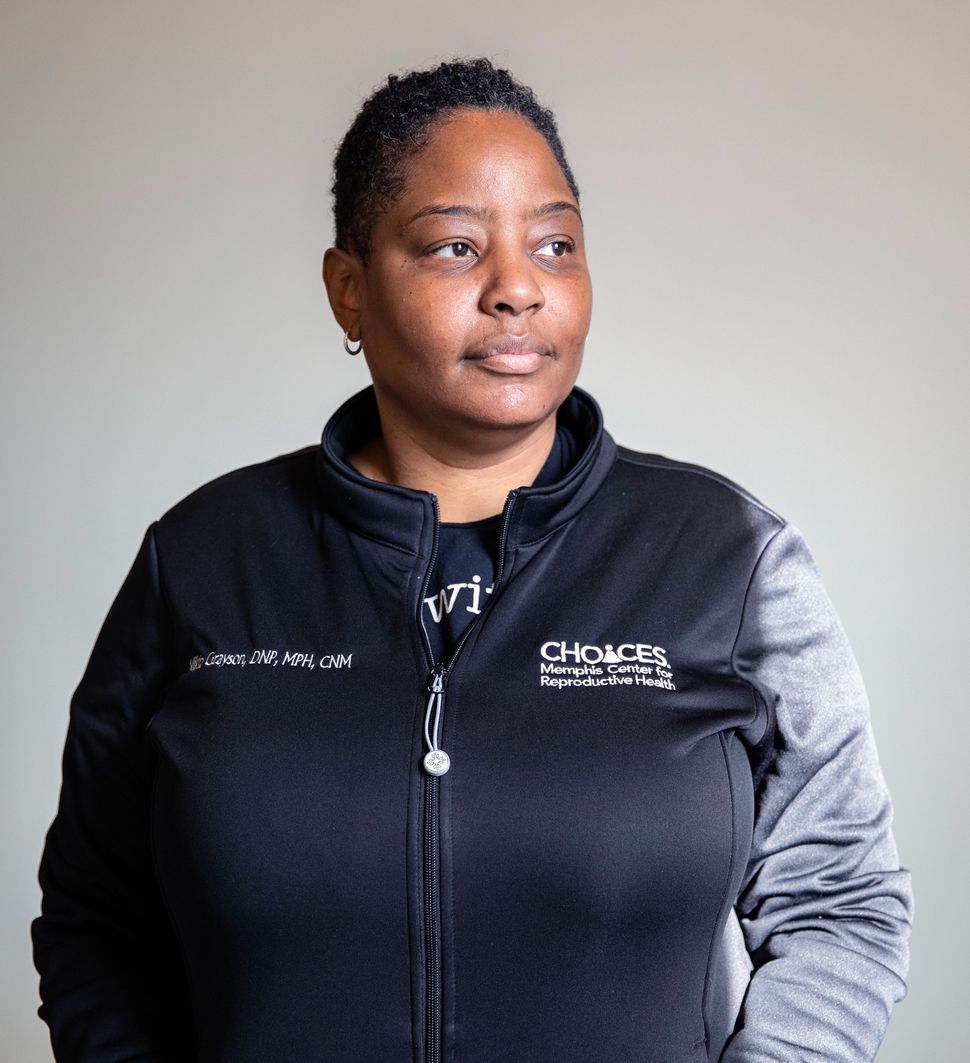
The first birth I attended as a midwife was a home birth. The mom — who is actually now a friend — was very trusting. She was well-informed and had lots of questions, and was very, very much an active participant in her care. She was very intentional about wanting to have a certain type of experience. She got to move around and be in her home, and we set up a pool for her to have hydrotherapy. And when she felt like she had reached a point where she couldn’t do it anymore, I read to her. I read affirmations that she had written and that she had been reading to herself throughout her pregnancy. It was a really beautiful experience.
Each birth is unique. The families bring different perspectives and different experiences to the births, but all of them have been very, very sacred, and I feel honored to witness these births and to be with these families, that they trust me enough to be with them. I remember all of them, and I remember all the babies and the birth dates. I’m maybe up to 200 now. I remember each experience, I remember the mothers. They get to that point where they feel like, ‘Oh, gosh, I can’t do this.’ Then afterward, they’re so proud of themselves for what they’ve accomplished, and it’s really empowering to see these pregnant people standing in their own power.
I think the way our medical establishment is set up, it’s not for pregnant people to ask questions and learn and be an active participant in their care. I wish that people had those opportunities because it’s truly transformative. This is a system that is deeply rooted in racism and disregard for the humanity of certain people, and I think that at this point, we have to create new systems and be disruptors to that old system.
I knew that the care would be transformative to patients personally, but what we’re seeing now is that it’s actually transforming them professionally as well. We have a lot of patients that are now going back to school to be midwives and to be doulas. They’ve been inspired, and honestly, they’re inspiring to me.”
Talita Oseguera, Memphis, Tennessee
“I worked in Alzheimer’s care for a while and then became a doula, that’s when my heart and ears were really opened to midwifery. I was partnering with people who were birthing in hospitals, most often Black women, but people from many different backgrounds, and I got to a point where I felt like I could no longer continue to see what I was seeing. There was a barrier because doulas have a certain scope of practice, doctors have a certain scope of practice, and I felt like my doula scope of practice was limiting. I had my own child, and then told my story and eventually became a researcher for a grassroots organization called Black Women Birthing Justice. At that point, I knew I wanted to become a midwife. There are many different ways of becoming a midwife, and I chose nurse-midwifery because I wanted to be able to move in all the spaces that people can give birth in. I want to show up for people who are historically and presently marginalized. Black women and birthing people, people who are indigenous to this country, people who have been pushed to the margins because of substance use — they are most often birthing in a hospital.
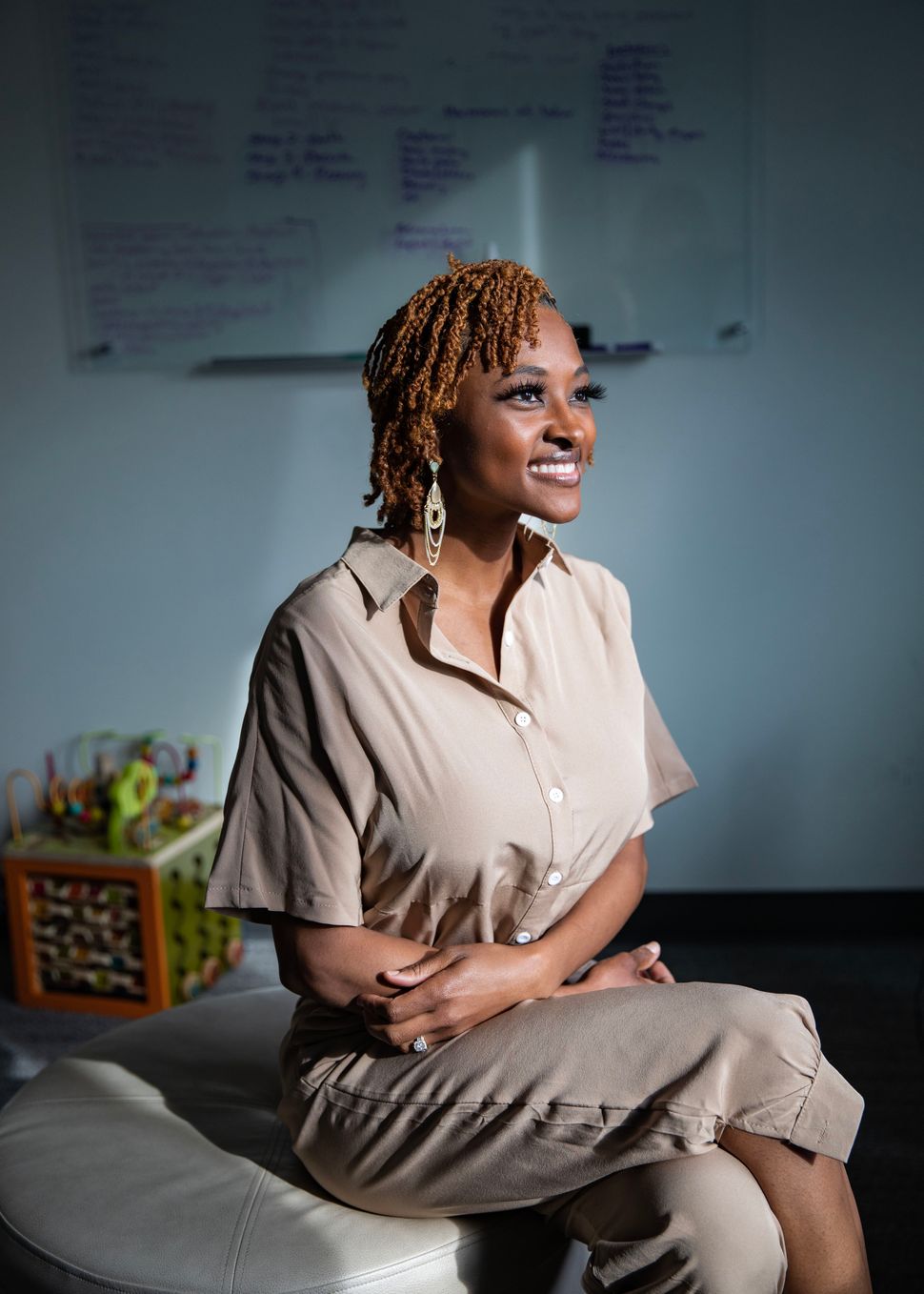
What I was seeing in the hospital in my doula role is that people’s voices were not being heard. I felt like people had given over their power to the hospital system, maybe because they felt like the doctors or the nurses knew more. And I felt like sometimes people who had really strong views about what they wanted were also not being listened to. I wouldn’t say that there was negligence, but in terms of interpersonal communication, there were some experiences where I feel like patients would walk away feeling like it was traumatizing. So I came to midwifery from more of the deficit side versus the asset side, which is what I try to focus on now — what helps someone be well and whole and healthy.
There’s a saying that when birth happens, there are two people being born. It’s a little baby, but then it’s also this person who’s giving birth and who is undeniably going to learn something new about themselves after this experience. So I love being a witness to birth. I love seeing people’s power and people realizing their own power.
I wish people knew that they can keep their power. They have a voice, they can keep their autonomy. It’s OK to express your needs. It’s OK to ask questions. It’s OK to ask questions multiple times. I wish more people recognized that labor, pregnancy and birth are normal, physiological processes. They’re not disabilities, it’s not always complex.”
Anjelica Malone, Isabela, Puerto Rico
“When I graduated high school, I knew I wanted to go into healthcare, but I didn’t know exactly what I wanted to do. I went into the military, and I was a corpsman. I also served as a technician and EMT in the Coast Guard, so I got a lot of healthcare experience. I also got experience in a primary care setting, and that’s where I really realized I like working with women. Working in the maternity space, you get to spend a lot of time with a single person. You’re in a relationship with them over the course of a year that makes a big impact in their life. I thought I wanted to be an OB-GYN. I thought I wanted to do surgery and things like that, but what I really wanted was to have a lot of knowledge and skills in a natural, normal, healthy birth. Along the way, I realized that’s not the way obstetrics and gynecology is going. It’s much more geared towards cesarean sections, limiting risk and limiting the options in order to limit risk. I thought, well, that’s not really what I want to do. I ended up getting pregnant and having my own daughter while living here in Puerto Rico. My second daughter was born in Guam with midwives, and it was then I felt called to midwifery.

With my own births, I realized birth can be an enjoyable thing that you experience that flows from whatever you were doing before into the next phase of life. You can go into labor in your home and feel relaxed, you can communicate with the person who’s supporting you in your care from your home. You don’t have to ever switch to, ‘Now I’m in the labor role, and I need to put on this special outfit and have all of these tests done on me, and people need to poke and prod me.’ It doesn’t have to be like that. It can happen on your timing.
There’s this idea that midwives are archaic. We all know that’s not true. The countries with the best maternal and neonatal outcomes have integrated midwives into their modern health care system. Midwives are the primary care providers for people who are pregnant. These are the countries with the best outcomes. Maternal mortality rates are going down in those countries. The C-section rates are going up here; in Puerto Rico, we have a 48% C-section rate — and I would guarantee that that is underreported. There are hospitals here with rates of 60%. And they’re limiting access to very skilled providers who could provide low-risk, low-intervention care: midwives. I’ve realized the best situation for attending births here will be for midwives to have reliable hospital support and backup. If we don’t have that, then it’s hard for me to feel comfortable continuing to attend births in people’s homes.”
Helena Grant, Brooklyn, New York
“I didn’t know that midwifery was still a thing, that there was a modernized version. I went to nursing school at Georgetown University. My plan was to work as a nurse, go back to school to finish the pre-med requirements, and then go to medical school. All my life, I knew I wanted to be in the field of mothers and babies. Then working in nursing at a hospital facility, I came to a deep understanding that I didn’t agree with a lot of the things that I was seeing. It just became crystal clear that I was supposed to be on this other path, and that’s when I started looking at midwifery schools.
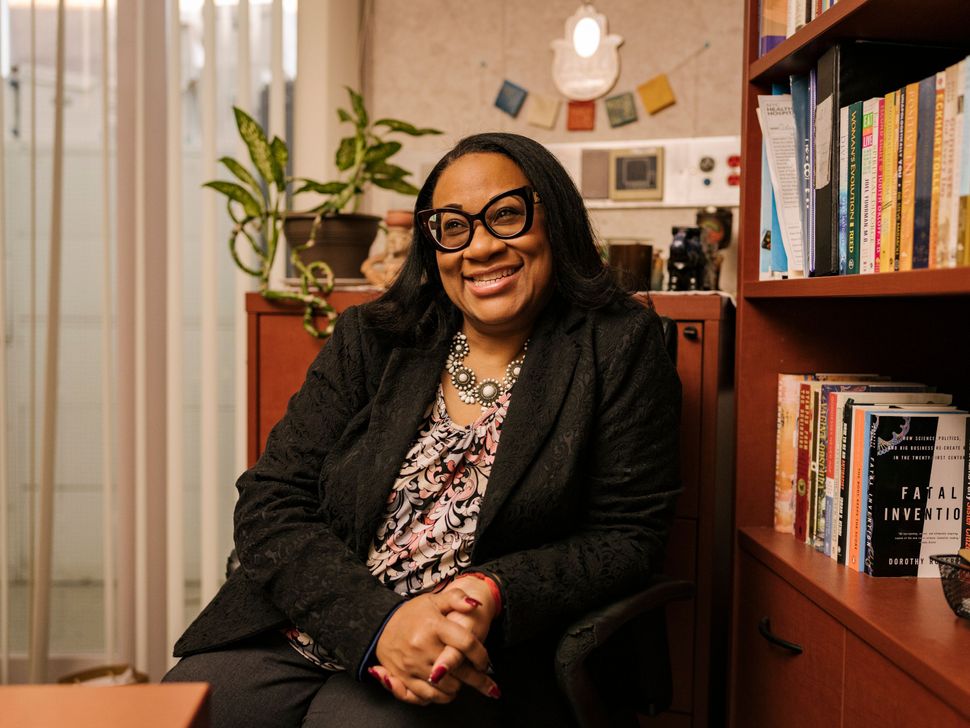
As long as mommy and baby are good, we can rock with it. That’s the beauty of the type of midwifery we practice here at Woodhull Hospital. If you come in and you’re doing it all on your own, we’re going to support you. If you have a comorbidity like high blood pressure, or diabetes, or any other issues, we have our docs on call to manage that part, but we still hold the normal for the birth. High-risk pregnancy does not mean your birth should be a circus.
I’m very proud that I can take care of a birthing person who’s ‘normal,’ and I can take care of everybody else, too, with my physician colleagues. The model we have here is very much like the model all over Europe.
Midwifery sits in the center, especially when it is an integrative model that practices side-by-side with physicians. We are like protectresses of the space. When you need your magnesium sulfate because you have high blood pressure, and you need your insulin for your diabetes, and you need your heparin because you had a previous history of a DVT — our physicians, they got you. When you’re in labor, they’re not going to do anything extra to you. They step back, and they let us take care of that because that is our expertise and specialty. At the end of the day, OB-GYNs are surgeons. They’re trained to cut, and they’re trained to manipulate. It’s not their fault. This is just American medicine. This is the technocratic, patriarchal model of medicine. There are times things absolutely need to be manipulated. But there are a hell of a lot of times they don’t. We’ve lost that wisdom of knowing when not to act.
Having a midwife means you can have whatever you want. If you want to get up and walk around your room, go to the bathroom, stand up in your bed, squat, have IV pain medication (if baby’s heartbeat is good), have an epidural, all of the above: it’s fine. Midwifery care is about shared decision-making. If you want it, and it’s safe, you’re getting it.”
CORRECTION: A prior version of this story misnamed the region in Puerto Rico where Anjelica Malone lives. A transcription error for the medical term “amniotic fluid embolism” has also been corrected.